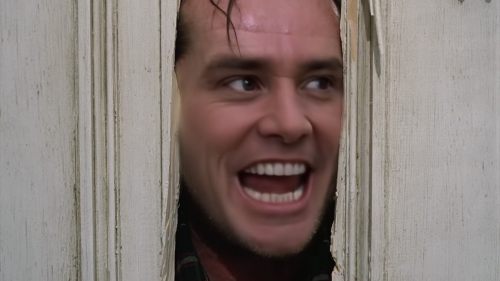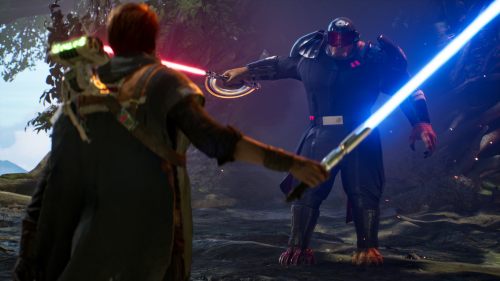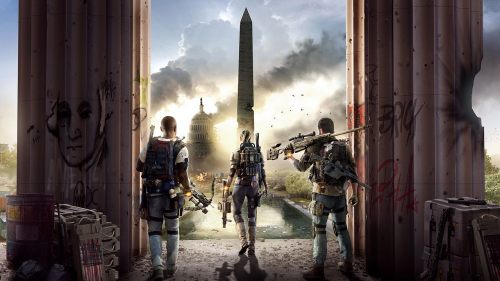INSIDE Game Review: Holy Shit, They Topped LIMBO
Playing the final act of Inside, I gasped in awe, recoiled in horror, cackled with laughter, and danced with excitement at the sheer audacity of the thing. Without spoilers or hyperbole: it’s probably the finest final act of a video game I have ever played.
Not that the rest of the game is some kind of disappointment. Playdead’s followup to Limbo is packed with haunting visual and aural design, clever puzzles, and elegant storytelling. At four or so hours, it’s an incredibly concentrated burst of imagination that outdoes its predecessor in just about every way - then almost mandates you jump in and play it again. It’s also a challenge to review: all I want to say is “do not read spoilers; do not pass Go; just play this goddamn game as soon as you can.”
Inside’s basic design echoes the simple, monochromatic puzzle-platforming of Limbo, but adds a number of literal and metaphorical dimensions. The graphics and environment are rendered in beautiful 2.5D, with Playdead putting all those Limbo dollars to good use. Vegetation sways, water ripples, and dust billows in a desaturated world that leaps off the screen like a series of digital paintings. The unnamed, exceptionally well-animated young protagonist starts out in spooky woods, but soon finds himself up against an industrialised machine-state. Piles of slaughtered pigs are just the beginning of the horror he'll find: as he descends into a nightmarish city, the vistas and goings-on get far stranger than anyone could reasonably expect.
I really can’t stress enough how weird and disturbing Inside gets, and I’m straining against powerful urges to avoid spoiling its surprises. Suffice it to say that the horror of Inside is not limited to scary environments or beastly creatures. It's far deeper than that.
In part, the story is told with visual and audio clues both overt and subtle, creating a growing sense of unease as its mysteries deepen and unfold. Not a single word is uttered in the entire runtime, and the only visible text are numbers guiding you (or are they?) towards your ultimate destination. Through your actions, but also through scripted animations taking place off in the distance, Inside paints a series of uncomfortable tableaus: armies of people marching into cages, strange shockwaves booming across the landscape, twisted forests growing inside great steel structures. And the sound design is just as lonely and unsettling.
But the real devious brilliance of Inside lies in its combination of gameplay and storytelling.
If you’ve played Limbo, the basics of Inside will come as second nature - pull this block along the ground, jump over this gap, hold down this button to move a bit of scenery, and so on. But Inside adds a number of mechanics - deftly taught through guided discovery - that generate fiendish puzzles and pique narrative curiosity in equal measure. Paced in peaks and troughs to avoid repetition and constantly confront the player with new ideas, the puzzles challenge the player’s understanding of how the world works, both physically and psychologically. Many puzzles are the sort of head-scratchers that make you laugh out loud when you work them out. One mechanic - which turns a mid-game episode into a primal exercise in terror - gets brought to a horrifying peak before being neatly inverted in the game’s latter episodes. It’s goddamned smart design.
Inside is a rare game that demands active thought well after the credits roll. It doesn't reward multiple playthroughs mechanically, apart from a handful of hidden secrets and a fourth-wall-breaking alternate ending, but I’d challenge anyone with an ounce of innate curiosity to finish it without immediately wanting to play it again. There’s so much going on in the margins - seriously, so much unthinkably bizarre shit - that fan theories will no doubt proliferate as to the meaning of the game’s story and worldbuilding.
Speculation as to the literal events and phenomena of Inside would miss the point. Its abstract, at times Ghibliesque design defies logic, using dystopian sci-fi and horror ideas to reflect themes and ideas rather than spin a finite tale. Exploring notions of industrial slavery, scientific hubris, institutional control, and the nature of body and self, it invites multiple interpretations and complex emotional responses. Mindless masses, hulking machinery, seemingly endless stygian abysses - it’s all potent imagery of oppression and despair. There’s resistance to authority in the game’s spirit, starting from the protagonist’s opening run from taser-equipped figures and continuing into its desperate, triumphant final moments. But there’s also a sense that nearly everything in your little revolt is pre-ordained. Maybe it’s about the dangers of non-conformity! Whichever way you see it, it’ll make you want to watch other people play, just so you can discuss and argue over its meaning.
And then there’s that final act. At once hilarious, thrilling, sickening, and sad, it made me happier than any game has in recent memory, capping off a brilliant few hours of gameplay. Playdead has built another all-timer with Inside, somehow improving upon perfection through imaginative, stunning, functional design. Though shot through with horror, Inside brings out the kind of joy that reminds me why I play video games. Its particular pleasures could not exist in any other medium. Get inside it as soon as you can.



